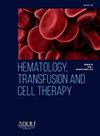MISSION TO MARS: RADIATION RISKS FROM INTER-PLANETARY TRAVEL
IF 1.6
Q3 HEMATOLOGY
引用次数: 0
Abstract
Exploration and innovation are 2 hallmarks of human endeavor. Human travel to the moon was accomplished in 1969 by the US. There are now plans to return to the moon in the Artemis mission in the next few years and then to travel to Mars. For perspective the direct distance to the Moon is 383,000 km whilst a mission to Mars could vary between 55‒400, 000, 000 km. and could take about 3-years for a return trip. Besides the technical challenges of a journey to Mars there are important medical challenges including: (1) Space radiation; (2) Micro-gravity; (3) A hostile, closed environment; (4) Isolation and confinement; and (5) Distance from Earth. Radiation is an important hazard for human inter-planetary space flight. There are potential health consequences, immediate and long-term. The immediate potential risks are: (1) Acute radiation syndromes; and (2) Neuro-ocular disturbances whereas the long-term consequences include: (1) Cancer; (2) Cardio-vascular disease; (3) Cataracts; and (4) Degenerative diseases. Sources of radiation on a journey to Mars include: (1) Trapped charged particles and high energy electrons (Van Allen belts); (2) Galactic cosmic rays; and (3) Solar events (charged particles & UV). Galactic cosmic rays include: (1) High energy/high charge ions; (2) High energy protons; (3) Secondary protons; (4) Neutrons; and (5) Fragments produced by interactions with the spacecraft shielding and human tissues. Solar particle events include: (1) Solar winds; (2) Coronal mass ejections; and (3) Low to medium energy protons. The Earth’s magnetosphere protects us from much of this radiation, but this protection is lost on a journey to Mars. The Artemis-1 mission which recently circumnavigated the Moon is providing data on radiation exposure. Our normal background radiation dose on Earth is about 2.4 mSv/year whereas journey to Mar could expose astronauts to 300‒600 mSv over 3-years. Concernedly, damage to DNA produced by heavy charged ions encountered in space is different and probably more dangerous than our exposure to ionizing radiations on Earth. Several mitigation measures have been developed including: (1) Spacecraft shielding; (2) Crew shielding; (3) Spacecraft positioning; (4) Mission planning; (5) Radiation storm shelters; (5) Limited spacewalks; (6) Crew selection and others. My conclusions are: (1) Radiation is an important hazard of inter-planetary travel; (2) There are immediate and long-tern consequences of high radiation exposures; (3) Interventions are needed to reduce radiation risk; (4) There are important knowledge gaps regarding long-term adverse events; and (5) We need to train a new generation of physicians to deal with these challenges.
火星任务:星际旅行的辐射风险
探索和创新是人类奋斗的两个标志。1969年,美国实现了人类登月。现在有计划在未来几年内通过阿尔忒弥斯任务重返月球,然后前往火星。从角度来看,到月球的直接距离为38.3万公里,而到火星的距离可能在55 - 40亿公里之间。回程可能需要3年时间。除了火星之旅的技术挑战外,还有一些重要的医疗挑战,包括:(1)空间辐射;(2)微重力条件下;(三)敌对、封闭的环境;(四)隔离、禁闭;(5)与地球的距离。辐射是人类行星际空间飞行的重要危害。这对健康有直接和长期的潜在影响。直接的潜在危险有:(1)急性辐射综合征;(2)神经眼障碍,而长期后果包括:(1)癌症;(2)心血管疾病;(3)白内障;(4)退行性疾病。火星之旅的辐射源包括:(1)被捕获的带电粒子和高能电子(范艾伦带);(2)银河宇宙射线;(3)太阳事件(带电粒子);紫外线)。银河宇宙射线包括:(1)高能/高电荷离子;(2)高能质子;(3)次生质子;(4)中子;(5)与航天器屏蔽和人体组织相互作用产生的碎片。太阳粒子事件包括:(1)太阳风;2)日冕物质抛射;(3)中低能质子。地球的磁层保护我们免受大部分辐射的影响,但在前往火星的旅程中,这种保护就消失了。最近环绕月球飞行的“青蒿1号”任务提供了有关辐射暴露的数据。我们在地球上的正常背景辐射剂量约为2.4毫西弗/年,而前往火星的宇航员在3年内可能会受到300-600毫西弗的辐射。值得关注的是,在太空中遇到的重离子对DNA造成的损害是不同的,可能比我们在地球上接触电离辐射更危险。已经制定了若干缓解措施,包括:(1)航天器屏蔽;(2)乘员防护;(3)航天器定位;(4)任务规划;(5)辐射风暴掩体;(5)有限的太空行走;(6)船员选拔等。我的结论是:(1)辐射是星际旅行的一个重要危害;(2)高辐射照射有直接和长期后果;(3)需要采取措施降低辐射风险;(4)关于长期不良事件存在重要的知识缺口;(5)我们需要培养新一代的医生来应对这些挑战。
本文章由计算机程序翻译,如有差异,请以英文原文为准。
求助全文
约1分钟内获得全文
求助全文
来源期刊

Hematology, Transfusion and Cell Therapy
Multiple-
CiteScore
2.40
自引率
4.80%
发文量
1419
审稿时长
30 weeks
 求助内容:
求助内容: 应助结果提醒方式:
应助结果提醒方式:


